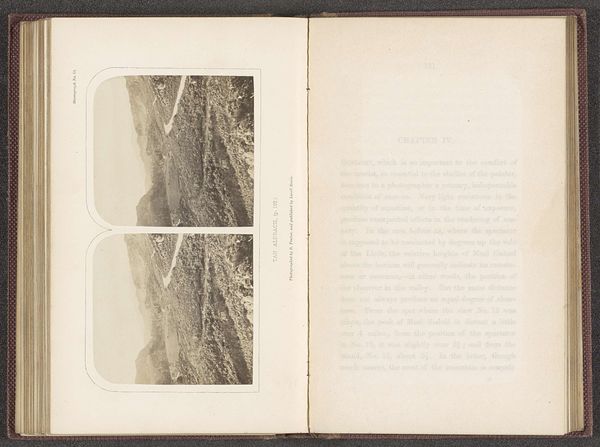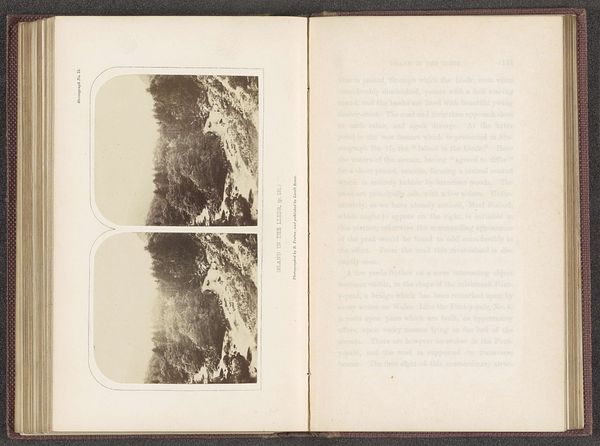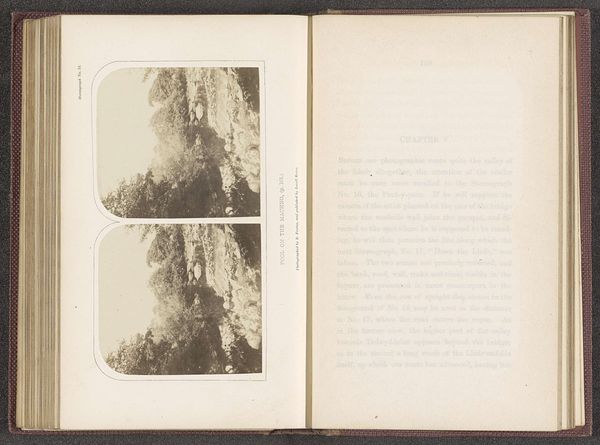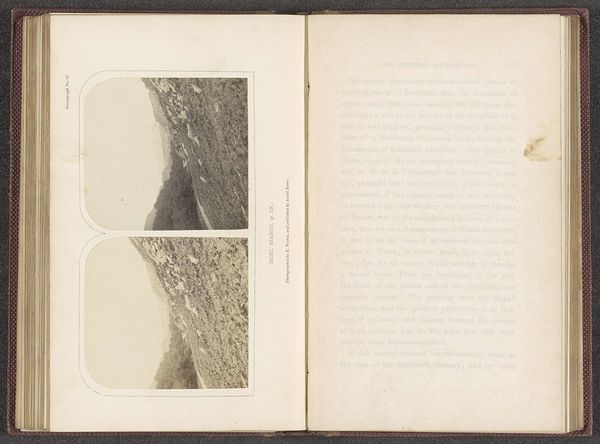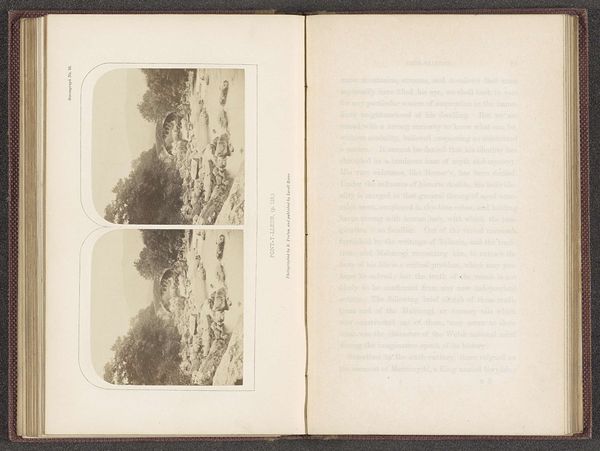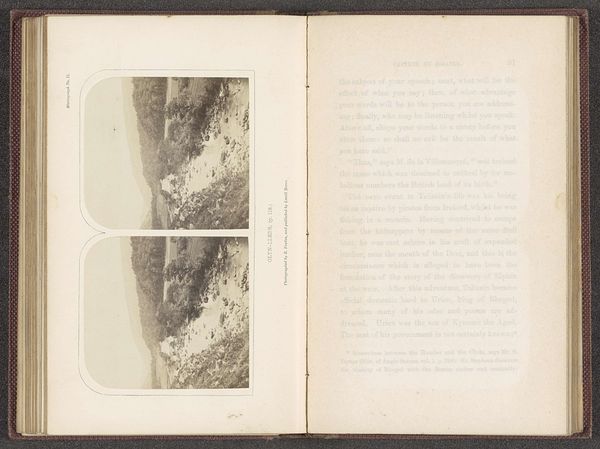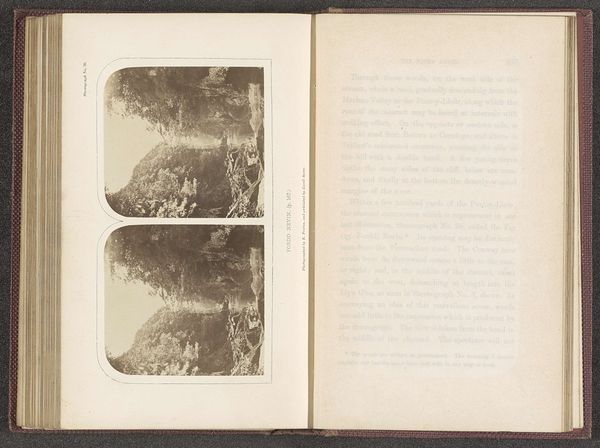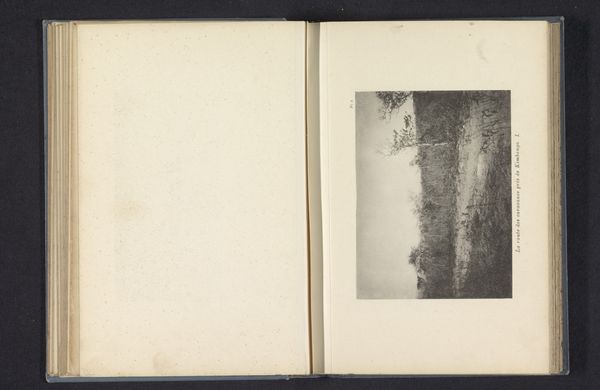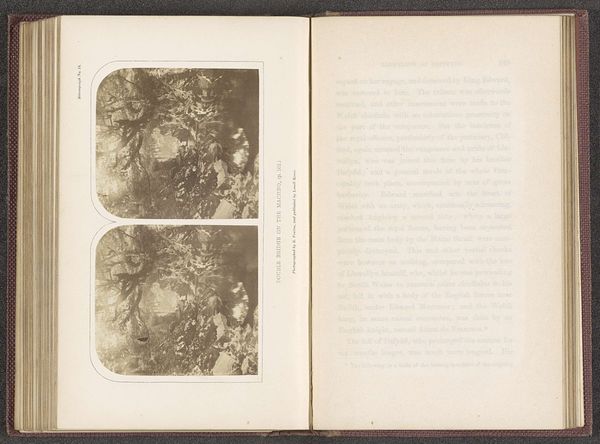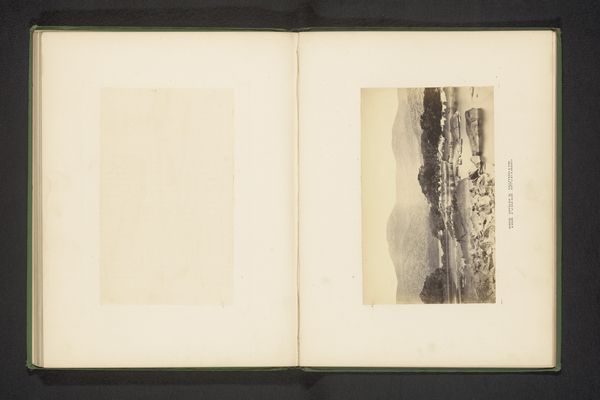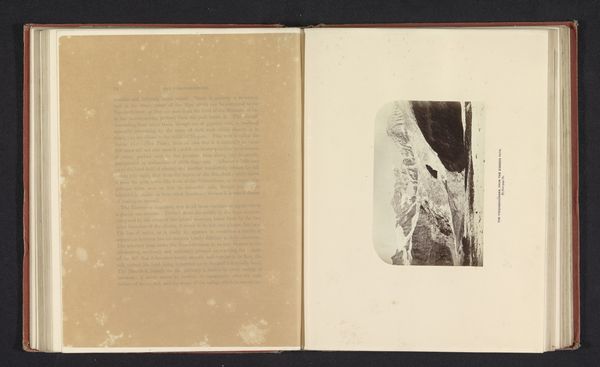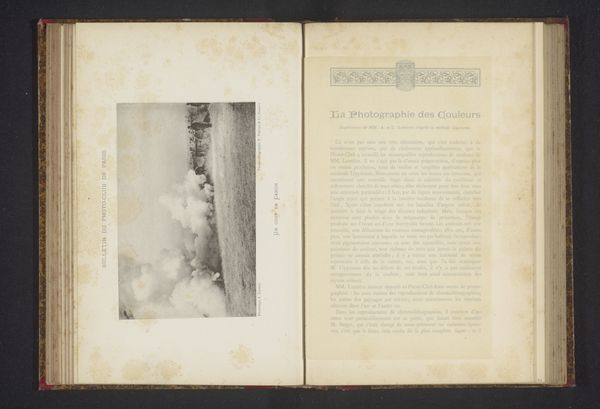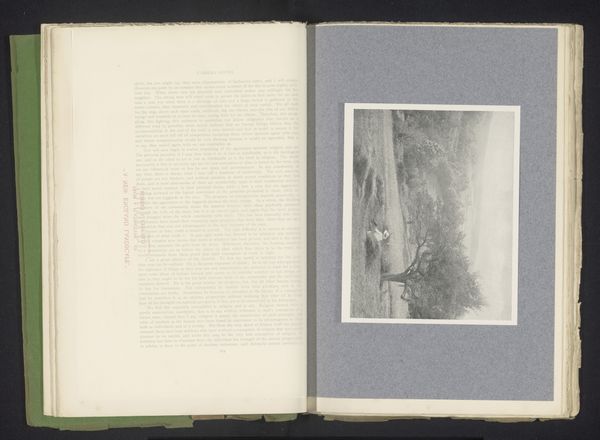
Dimensions: height 128 mm, width 197 mm
Copyright: Rijks Museum: Open Domain
Curator: I find the monochromatic rendering creates a somber mood; the greys reflecting on the surface and giving it a muted effect. Editor: Indeed, the use of gelatin silver print allows for an impressive tonal range, giving the overall landscape a soft, dreamlike quality reminiscent of Romanticism. We’re looking at Roger Fenton’s “The Llyn-Glas or blue lake,” dating to 1859. Curator: As if this wasn’t composed during an era of intense colonial exploration and environmental change; a stark comparison to contemporary views on conservation. I also observe how he chose his framing, very limited space for sky versus emphasizing land… Was he trying to showcase the rich and powerful landscape available? Editor: It could also simply have been a stylistic choice—a way of playing with semiotics to emphasize a contrast between water and rock textures to suggest a mood and not make an environmental statement. Curator: Are you suggesting Fenton’s perspective can be decoupled from the historical moment from which it was created? I view landscape photography during the time often idealizing what can later be taken to perpetuate an agenda of dominance. Editor: It would also be an interesting case to analyze compositionally; a symmetrical composition where he equally gives space to the vegetation around it. How does the balance here influence our emotional response? Does it reinforce the idea of nature as inherently stable and unchanging? Curator: I would argue that such visual harmony masks complex power dynamics. Whose gaze does this serene landscape serve? How does its accessibility reflect inequalities in land ownership and resource distribution? We might think about labor, resources and economic benefits to create this image! Editor: Well, I for one appreciate how it provides viewers a moment to meditate on something else. This reminds us about the importance of understanding artwork to learn the language that makes up each interpretation. Curator: I hope, that such works allow critical interrogation of environmental histories embedded into such a scene before us!
Comments
No comments
Be the first to comment and join the conversation on the ultimate creative platform.

